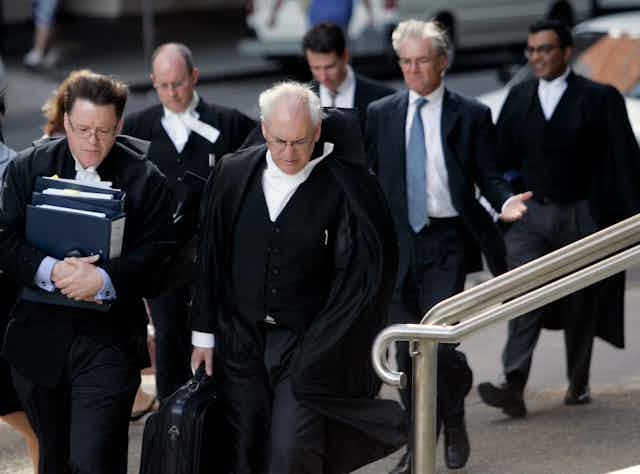Third party litigation funding, once illegal, is now on the rise in Australia and the courts are stepping in to regulate it in the absence of government.
Thanks to a recent court decision, the court can now approve “common funds” for litigation , meaning funders can lend money to claimants for their legal costs, in return for a share of the spoils.
Previously if there was no agreement for third party litigation funders to get a cut of the damages after a case, these funders would partly miss out. Now even without an agreement, the court can decide that third party litigation funders can receive part of the damages.
This came about because of a decision in the Full Federal Court against insurance business QBE where the court approved a “common fund” for third party litigation funders.
This may seem like it will help third party litigation funders to receive extra commissions but there is a potential sting in the tail for the industry. The court may now be the one to decide the amount of commissions they receive.
The court approved the proposal in the QBE case, though did not set a commission rate. The decision hints that courts may be willing to get into the business of reviewing contractual arrangements between funders and litigants, in the interests of fairness.
The rise of the third party litigation industry
Courts used to call third party litigation funding “champerty” and frowned upon it. However since the Australian High Court decision in Fostif in 2006, third party litigation funding has become not only legal, but a growth industry.
I have studied 19 major Australian investor class actions and more than 60% appear to have had a third-party funder. Many in the legal profession say this funding is a positive development encouraging access to justice.
Others believe it may be negative, leading to third-party funders stirring up litigation which would otherwise not occur. Litigation funders counter by saying it would be bad business for them to prosecute cases that have no merit and are unlikely to succeed.
Protection of litigants, as consumers of litigation funding, is an important issue but it is not clear that court supervision through the provision of these “common funds” will solve all problems.
Problems with third-party litigation
One problem is whether litigation funders will have the cash reserves to pay adverse legal costs if the claims are unsuccessful. This could be helped by a system of licensing for this industry to ensure it has adequate capital to meet adverse legal costs, where an unsuccessful plaintiff is ordered to pay the defendant’s costs.
The Federal Court decision may also encourage “open class” rather than “closed class” actions. An open class covers all victims of illegal conduct, whereas a closed class usually only covers those who sign up with a funder or lawyer.
Open classes will tend to widen access to justice and remove a potential conflict of interest that lawyers may have between funded and unfunded claimants (because open classes with common funds mean no unfunded claimants). This also means that more people may, unless they specifically opt out, find themselves involved in a class action (for example, small investors in public companies which have made misleading statements or nondisclosures).
Open classes will not remove all lawyers’ conflicts of interests. Lawyers will still have incentives to want to please both litigant clients and their third party litigation funders, whose interests may differ.
My research suggests that three party agreements between litigant, lawyer and litigation funders have potential problems, as there are incentives for two of the parties to collude to the detriment of the third. The problem is that the interests of the funder and litigant may be different.
This might happen for example when a settlement offer is made and the funder wants to accept but the litigant doesn’t (or vice versa). The lawyer is supposed to follow the client litigant’s instructions but may prefer the client to do what the funder wants, as the funder is paying the fees and is a source of work to the lawyer.
A partial solution with merit is requiring funders to maintain a small compulsory excess of a few thousand dollars, as insurers do (this is so litigants aren’t completely indemnified). Litigants would then still have to pay some adverse costs which would better align their interests with funders (reducing potential conflicts of interest) and it would also discourage litigants from bringing frivolous claims.
ASIC already has acted to partly regulate these issues by publishing a regulatory guide but further laws may be needed. These could establish that the funder has overriding duties of good faith to the litigant, which cannot be contractually altered.
Australia is leading the way in third party litigation funding so that overseas experience might not help us to decide which course of action is best. Australian courts can look after some aspects of third party litigation funding but some legislative and prudential regulation is still needed.

